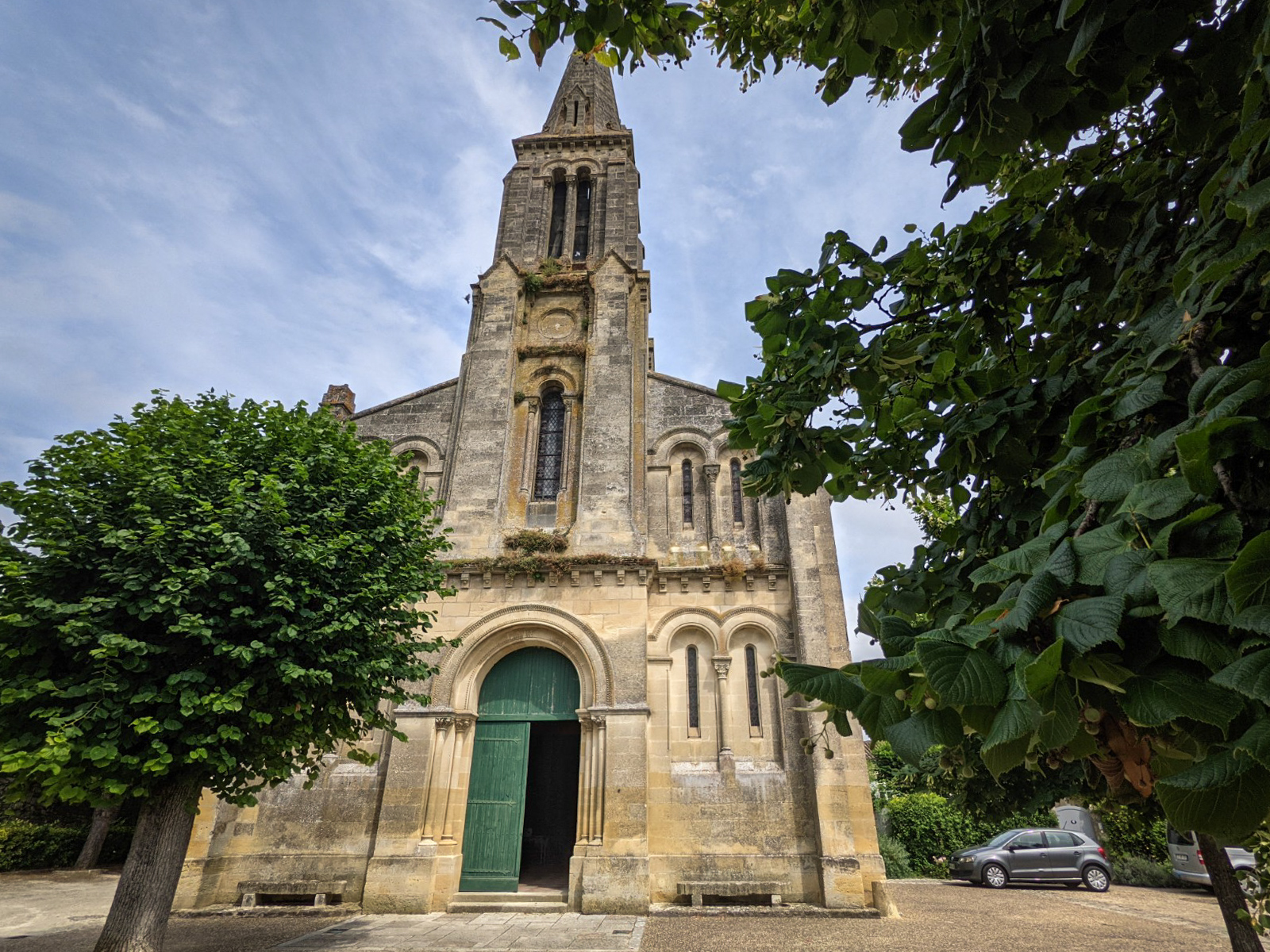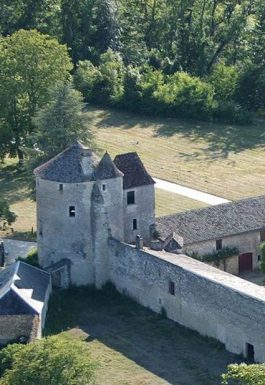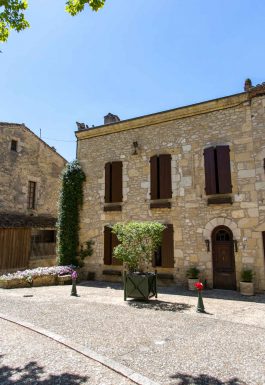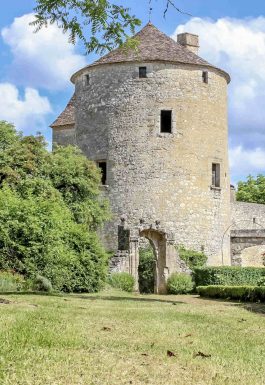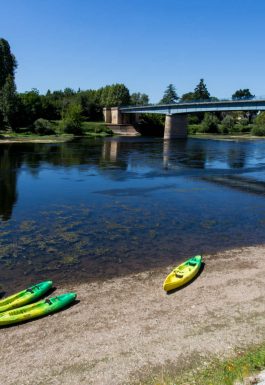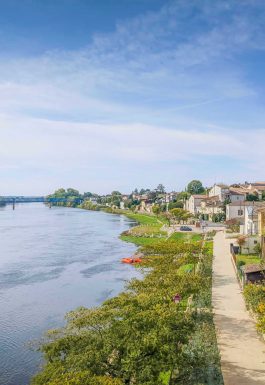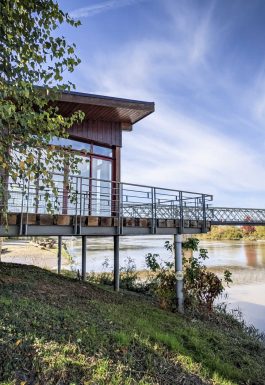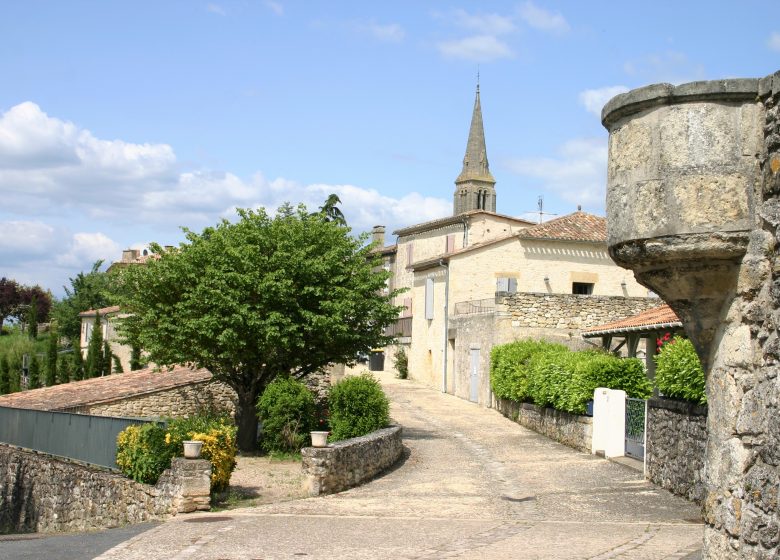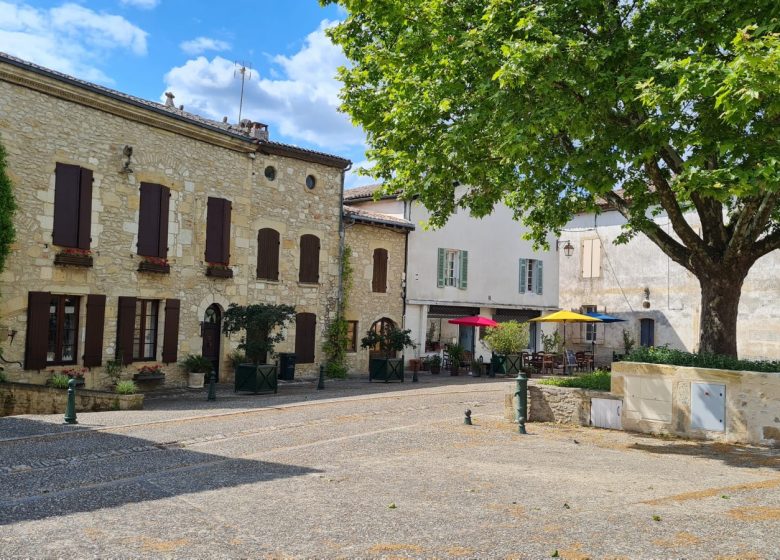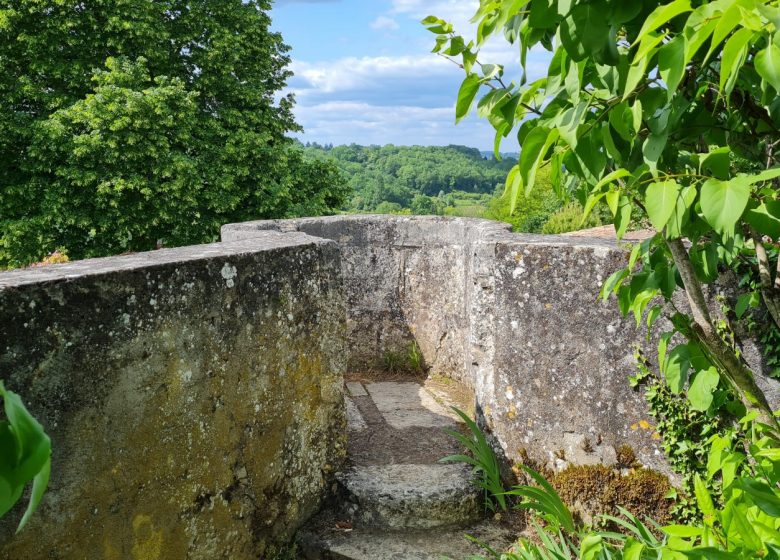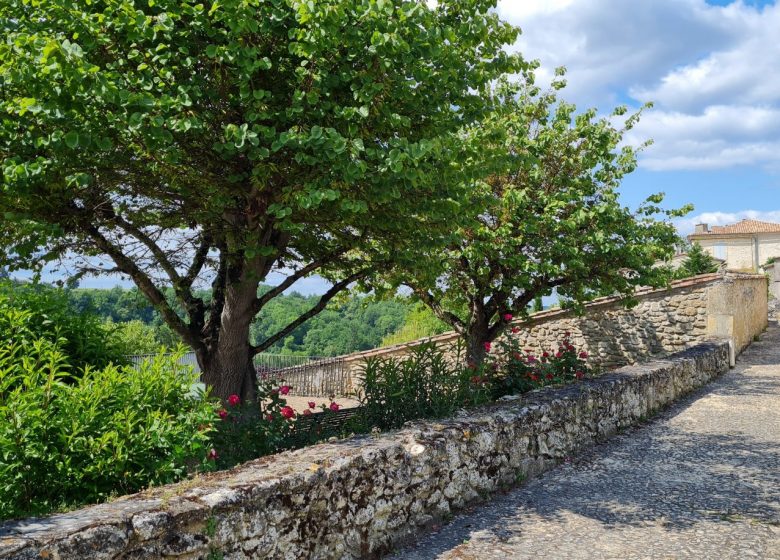Course of the Ditches
On your right is the Cours des Fossés. By this street, you enter the fortified town: the castrum. Imagine that at the end of the street, facing the Croix Saint-Jean, in the square of the modern houses, two two-storey towers flanked a strong door with a drawbridge. It was the entrance to the fortress. A fortified castle stood at the northern tip of the castrum. Few vestiges of this castle remain today (poster and pieces of towers but not accessible, on a private site). To the south of the town, the defense system was completed by another castrum: the castle of Valens. The castrum housed up to 1400 soldiers at the end of the Hundred Years War. Take the rue du Château in front of you. This street is in place of the old city walls. It goes up, as its name suggests, to the Château de Gensac, which no longer exists. It was restored by the Companions and respects the standards of the Middle Ages.
